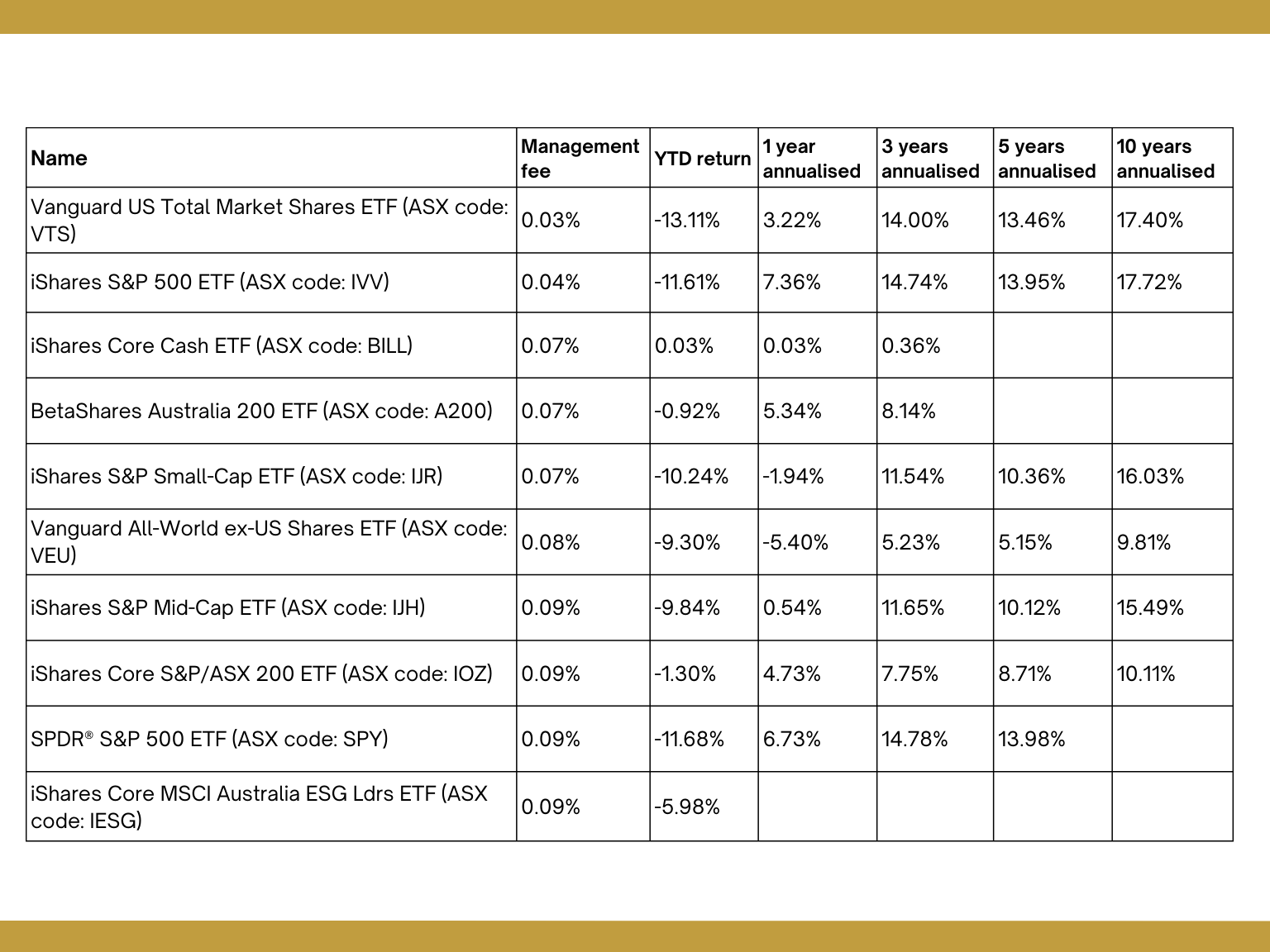Is the cost worth it? The 10 cheapest ETFs v the most expensive
Low cost, passive, diversified exposure. These three things typically come to mind when investors think about exchange-traded funds (ETFs) and once upon a time, this was true.
The evolution of the ETF market has seen a movement from traditional broad-based index exposure to smart-beta strategies and now, even active management and leveraging, with equivalent evolution in costs. But has greater cost translated to performance?
Why are some ETFs cheaper than others?
In their earliest form, ETFs were purely passive investments, meaning they aimed to track the performance of a selected index, such as the S&P/ASX200.
This replication could be physical, such as holding the same stocks or representative stocks, or synthetic where it uses derivatives to replicate.
Management fees were typically low because trading≠ could be automated to match the index and didn’t require teams to run investment activities like research.
Newer generation ETFs used smart-beta strategies – still considered a passive style but with greater tailoring.
A smart-beta ETF still tracks an index but uses tailored filers in the form of fixed selection and eligibility criteria to track objectives such as high yield, low volatility, or alternative weighting methods.
ETF Securities
The more tailored the strategy becomes, the more costs involved in designing, implementing and running – even if it is still an index.
Smart-beta ETFs have become increasingly popular in recent times, enabling investors to access more unique styles than the traditional broad-based indices.
There are often far fewer stocks included in these baskets too due to the higher level of tailoring in the index. Thematic ETFs accessing areas such as esports or robotics are an example of this type of ETF.
Actively managed funds and geared funds are more expensive again due to the intensive work required in managing and administering their strategies and proprietary approaches.
For the purposes of this article, we'll just focus on the prices and performance of those ETFs which are listed as passive index following instruments.
Cheap v expensive
While the old adage says you need to pay for quality – or in the case of finance, performance – this is not necessarily the case when it comes to passive investments..
The 10 cheapest passive ETFs listed on the ASX
%20(7).png)
The 10 most expensive passive ETFs listed on the ASX
%20(6).png)
The most expensive offering (VanEck China New Economy ETF (ASX code: CNEW)) with a fee of 0.95% pa – starting to feel like active management fees – had negative 1 year returns of -19.72% and returned 8.02% pa over 3 years.
By contrast, the cheapest ETF (Vanguard US Total Shares ETF (ASX code: VTS)) with a fee of only 0.03% pa has offered 7.88% over 1 year and returned 13.66% annualised over 3 years before fees. It also has a vastly longer history of performance.
It’s worth noting though that we aren’t comparing apples with apples – these ETFs aren’t even focused on the same regions.
The Chinese market has faced vastly different challenges in the past three years compared to the US market and its performance shouldn’t match.
While still not necessarily like with like, it’s a fairer comparison to look at two ETFs focused on the same region with the same benchmark which is likely to have a reasonable level of crossover in investments.
For example, the following two ETFs use the Solactive Australia 200 as the investment universe (one purely tracking this, the other a more tailored algorithm).
- The Betashares Australia 200 ETF (ASX code: A200) has a management fee of 0.07% and returned 10.77% over 1 year and 9.66% pa over 3 years annualised.
- The SelfWealth SMSF Leaders ETF (ASX code: SELF) has a management fee of 0.88% pa and returned 11.60% pa over 1 year (the fund only launched in November 2019). (NB SelfWealth recently closed this ETF but I’ve left the comparison as an example).
Performance looks more similar in this case, with the more expensive offering being slightly higher over the 1 year period. It would be more interesting (and more valuable) to see a longer-term comparison but many of the more expensive offerings are newer launches and therefore less proven over a range of market cycles.
Aside from this though, fees eat into performance so investors might start to wonder whether paying for tailoring if performance is not dramatically higher is actually worth it.
In conclusion: Are cheaper ETFs better?
As with all things in life ... it depends and not necessarily.
To quote the lawyers, past performance is not a reliable indicator of future performance - so there's no guarantee that a traditional vanilla index will keep offering you better performance or be right for your portfolio.
There may be some merit to looking towards the more expensive, more tailored options if your investment strategy warrants it.
There are also different risk levels involved in different indices.
Passively following the market may be riskier than, say, using a more tailored (and therefore more expensive) index that specifically excludes sectors that are known to be more volatile or cyclical.
On the face of it, though, it is understandable that beginner investors, as well as more experienced investors, choose to set and forget their investments in a selection of the cheapest ASX-listed ETFs. After all, even Warren Buffett is fond of a good broad-based index fund.
NB: This wire was updated from the version published 1 June. The original version showed Total return (price) as at April 2022 and included some NZ ETFs. The updated tables show Total return (NAV) as at end May 2022 and have removed the NZ ETFs.
2 topics
15 stocks mentioned

